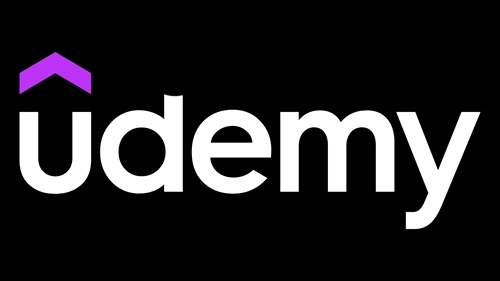Udemy is a popular global online learning marketplace that gained popularity for connecting instructors to learners. This platform offers courses on many subjects like technology, business, creative arts, personal development, and more. Udemy is preferred by learners because they can take individual courses or choose the option to subscribe for access to courses in collections.
Udemy also has a corporate offering, called Udemy Business, which helps in training employees. The company is performing well in this segment, where it has started shifting more toward a recurring or subscription model in 2025. The company is also focusing on enterprise contracts to improve predictability and stable revenue. With the focus on AI tools to enhance learning and to create new content with a role-play simulation option, Udemy is succeeding in the Indian market.
To understand how Udemy makes money, it would be better to take a close look at its business model and how the business is structured. Let’s get started:

How is Udemy’s Business Model Structured?
Udemy’s business model has two key segments that help in making money: the primary model is the consumer marketplace, and the second model is the enterprise or Udemy business. If we look at the consumer side, this segment is dedicated to students or individual learners who pay per course, where learners get lifetime access to the course. In this same model, Udemy also offers options like a subscription for monthly and annual fees.
In the enterprise side of the company, Udemy Business is completely based on subscription learning for companies, where they pay recurring fees to give their employee access to curated content. Besides these courses, there are learning paths, analytics, enterprise features, and much more to attract corporates for their subscription plan. This segment of the company is able to generate more revenue, and it is also stable.
| Company/Brand | Udemy, Inc. |
| Establishment Year | 2010 |
| Headquarters | San Francisco, USA |
| Founder/Owner | Eren Bali, Gagan Biyani, Oktay Caglar |
| Industry | Online Learning / EdTech / Skill Development / Corporate Training |
| Net Worth (2025) | US$786.6 million (full year ended Dec 2024) |
| Total Revenue 2025 | US$199.9 million for quarter ended June 30, 2025 (~3% YoY growth) |
How Does Udemy Make Money?
Udemy relies on multiple streams to make money, where its income comes from selling courses, subscription plans, and many other ways. To understand better, let’s have a close look at each revenue stream:
Courses Sale in Consumer Marketplace
A large chunk of revenue for Udemy’s business comes from the course sales, which learners buy individual courses. As the course is purchased, the learners typically get lifetime access to the purchased course. Udemy also hosts many courses in many subjects, which are created by external instructors. The company shares part of its revenue with instructors. The company also drives traffic through promotions, discounts, seasonal sales, and coupons to new courses.
Subscription Plan for Consumers
Udemy has developed subscription models for individual learners, giving access to a catalog of top courses for a recurring fee. This adds recurring revenue, improves customer retention, smoothens demand swings, and reduces dependency on one-off course sales. Subscription revenue is growing, both for consumer plans and the enterprise side.
Udemy Business
The enterprise segment of the company makes the biggest chunk and a steady stream of income for Udemy. On the business side, Udemy does contracts with companies or corporate clients for the subscription model. The plans are customized for the companies’ requirements, which helps the platform make a steady stream.
Instructor Revenue Share and Marketplace Dynamics
Any instructor or expert on any topic can sign up on the Udemy platform and start making content for demanding topics. It means that Udemy doesn’t rely on its own content but also hosts content of other instructors and makes money through the marketplace dynamics. Through this approach, Udemy shares revenue with the instructor but takes a small cut as commission.
Discount, Promotion, and Seasonal Sale
Udemy frequently uses discount strategies (sales, coupons) to drive enrollments. Many courses are sold at heavily discounted prices, which helps increase volume. Though discounting reduces revenue per course, volume helps offset.
Financial Performance
In the full year 2024, Udemy reported US$786.6 million in total revenue, up ~8% YoY. The enterprise segment (“Udemy Business”) grew ~18% YoY to ~$494.5 million in 2024. Meanwhile, the consumer segment revenue declined somewhat. In Q2 2025, Udemy revenue improved by 3% over last year, which means the company did $199.9 million in revenue. The key source of revenue was the enterprise segment, where the company made around $129.3 million.
What’s new in 2025?
In Q2 2025, Udemy reported GAAP net income of ~$6.3 million. That’s a milestone for Udemy as it is touching new highs and proving that the concept works. Additionally, Subscription-based models (both on the enterprise side and the consumer side) are taking a larger share of revenue. The company is pushing consumer subscription plan take-up.



